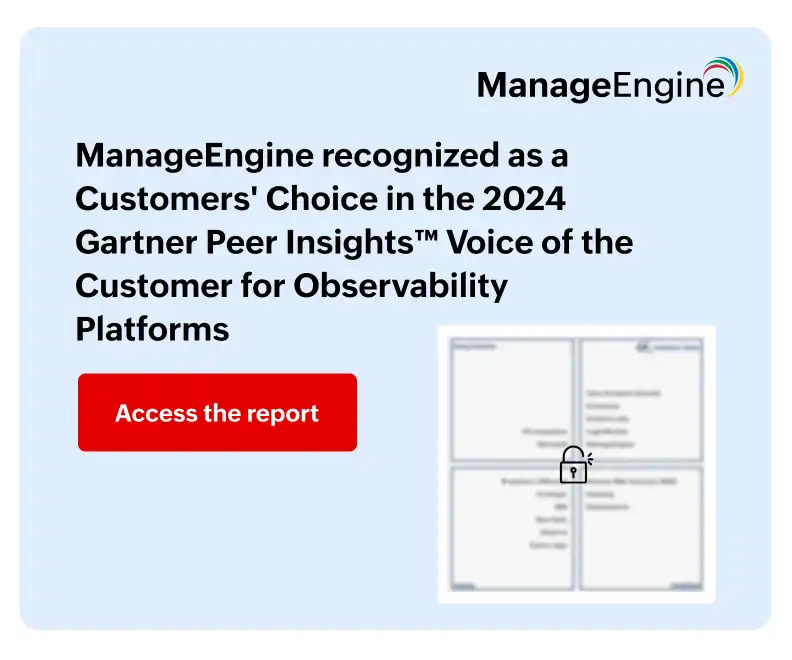Challenges presented by the modern complex network infrastructure
The rate of change in the industry is so dynamic that the complexity of networks evolves over a shorter period of time, like 2–3 years, thanks to the different sizes, scales, strategies, industries, and so on that an organization decides to operate in. Hybrid networks have made troubleshooting increasingly complex; an IT admin has to worry about on-premises infrastructure composed of different vendors, versions of code, and different outputs, along with software-defined data center solutions and a multi-cloud presence that depend on the underlying infrastructure. The result is very difficult troubleshooting, where IT personnel are expected to have proficiency across many vendors, stay up-to-date with code versions, and always have precise know-how to extract the exact information from the infrastructure to troubleshoot effectively.
Challenges in traditional network management
Some of the characteristics of traditional network management that set it apart from the modern approach are the ones that become challenges when faced with a modern, vast, and complex IT infrastructure.
Manual device configuration: Traditional network management demands a much higher degree of manual intervention across different stages starting from device discovery. The processes are time-consuming, adding to more operational complexity and costs. Need for continuous manual intervention combined with a sprawling network increases the likelihood of human errors and creates inconsistencies in management.
Tedious troubleshooting: Troubleshooting has to be performed on a device-by-device basis, making it challenging to diagnose issues from a birds-eye perspective. This results in longer resolution times and increased downtime.
Compartmentalized network visibility: Individual device management limits panoramic visibility into the overall availability, health, and performance of the entire network. This challenge further eats into the operational costs as organizations will be forced to subscribe to multiple tools to unlock network visibility and deep analysis.
AI's progressive influence on IT networking
When discussing artificial intelligence, it is important to cut through the noise and distinguish between hype and reality. As of now, AI is enhancing specific areas of IT networking rather than delivering a complete, magical overhaul. Notable improvements have been made by integrating AI into network operations, such as automating routine tasks, improving anomaly detection, and providing predictive insights.
We can definitively say that these are the current applications of AI in modern networking:
- Anomaly detection: AI excels at analyzing vast datasets to identify patterns and detect anomalies that may indicate potential issues or security threats. This gives IT teams enough time to respond and restore systems before problems escalate.
- Automation of routine tasks: Networking automation has been an ongoing process long before the AI and LLM hype. However, AI can further enhance areas such as configuration management, performance monitoring, and troubleshooting.
- Predictive maintenance: AI’s ability to process large datasets extends to analytics and reporting, enabling it to forecast potential system failures and recommend proactive measures.
AI and ML will not replace engineers
AI and ML are influencing networking, but they cannot yet be considered a disruption that permanently transforms jobs and roles. The reality is different because implementing AI requires more preliminary effort than one might expect—overseeing and cleaning data, mapping the entire infrastructure, determining 'normal' behavior, and continuously updating AI models to align with network changes.
Challenges do exist with AI
- Artificial intelligence isn't faultless. Models tend to exaggerate, hallucinate, or make mistakes, especially in scenarios that are entirely new and not part of their training data. Since models are trained on historical data, they may struggle to adapt to newer types of traffic, protocols, or configurations. In a field like networking, where the margin for error is minimal, network engineers and organizations can't fully rely on artificial intelligence or machine learning without a proven track record.
- The complexities of modern infrastructure add to the challenge—multiple cloud environments, SD-WAN reliance, containers, and other components make AI's role far more advanced than just detecting anomalous spikes in traffic or bandwidth utilization.
- Cultural challenges also exist. Network engineers are trained to work with deterministic systems, while machine learning operates on probabilistic principles—dealing with likelihoods rather than certainties. Additionally, AI’s reasoning capabilities remain largely opaque.
- In a world where trust is critical, human oversight remains essential. AI-driven decisions and actions often lack transparency, making it crucial for engineers to maintain control and understanding over automated processes.
AI/ML Implementation best practices
Start with specific use cases: Identify and address manageable, high-impact areas such as predictive maintenance or anomaly detection. Gradually expand AI applications as confidence and expertise grow within the organization.
Adopt a collaborative approach: Engage network experts and AI specialists to align AI models with operational goals. This ensures AI solutions integrate seamlessly with the network’s architecture and requirements.
Encourage a culture of learning: Promote continuous training for IT teams on AI tools and technologies. Staying informed on emerging trends ensures the organization adapts effectively in a fast-changing AI landscape.
Plan gradual implementation: Deploy AI in stages to test scalability and efficacy. This approach allows for troubleshooting, learning, and refining models to maximize value without disrupting existing operations.
Focus on data quality: Ensure clean, relevant, and comprehensive data for AI training. High-quality data drives accurate predictions and actionable insights, enhancing overall network management efficiency.
Monitor and refine models regularly: Implement periodic checks and updates for AI models to adapt to evolving network conditions and new requirements, ensuring sustained performance and relevance.
Unlock AI and ML use cases in your network infrastructure with OpManager Plus
Filter noise, amplify insights
OpManager Plus excels at processing network telemetry, filtering out irrelevant data to focus on actionable insights. With advanced noise-reduction algorithms, IT teams can efficiently detect incidents and respond to critical alerts, enhancing decision-making and operational workflows.
Adaptive alerts for proactive monitoring
OpManager Plus uses real-time and historical data to set adaptive thresholds for monitoring performance metrics. Alerts are categorized by severity—Attention, Trouble, or Critical—enabling network admins to proactively address issues and prevent downtime.
Stay informed in real time
Seamlessly integrated with tools like Slack, Microsoft Teams, and Telegram, OpManager Plus ensures real-time notifications via email, SMS, or chat. Alarms are customizable and actionable, empowering IT teams to resolve issues swiftly and efficiently.
See the picture with correlation
By correlating application and network performance, OpManager Plus uncovers interdependencies and visualizes device relationships with organization maps. This improves troubleshooting and prioritizes critical alarms for faster issue resolution.
Pinpoint issues with RCA
Root Cause Analysis (RCA) in OpManager Plus simplifies troubleshooting by correlating performance metrics and alarms. Its visual RCA profile helps IT teams quickly identify bottlenecks and underlying issues, reducing mean time to repair (MTTR).
Automate issue resolution
OpManager Plus employs closed-loop workflows for autonomous remediation. Combined with real-time topology mapping, it provides a clear view of device health and dependencies, enabling IT teams to resolve issues efficiently and maintain reliability.
Plan ahead with performance forecasting
AI-driven capacity planning analyzes resource usage trends, offering precise forecasts for memory, CPU, and disk space needs. This proactive approach helps avoid resource bottlenecks, optimize costs, and schedule expansions effectively.
Predict trends for smarter decisions
Leverage ML-powered trend analysis to forecast network performance based on historical data. OpManager Plus anticipates shifts, dynamically adjusts baselines, and enables proactive measures, ensuring peak network efficiency during high-demand periods.



